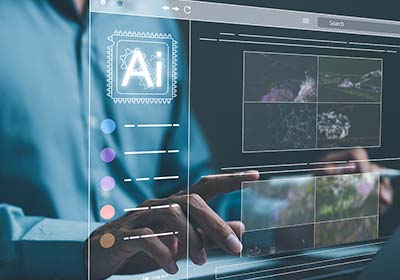
Build and Modernize Intelligent Applications
AI is here. Are you ready to capitalize?
It’s a new year and truly an exciting moment for AI, but there’s been a lot building up to this.
AI is a broad term which covers many different technologies, developed over decades. It may seem as if we’re entering a new era in AI, but several momentous milestones in the field have brought us to the inflection point we see today for the transformative potential of AI.
Turing Test
Alan Turing invented the Turing Test to determine if a computer could pass for a human in written linguistic fluency.
Machine Learning
Arthur Samuel (from IBM) coined the term “machine learning”, the origins of which are rooted in theories of artificial intelligence.
Deep Learning
Geoffrey Hinton (University of Toronto) invented fast-learning algorithms and came up with the term “Deep Learning” to explain how AI-based on ML can learn like a human.
ChatGPT Introduced
Generative AI burst into our cultural consciousness with ChatGPT’s introduction and has brought us to this inflection point.
ChatGPT has fundamentally changed both what we can accomplish with software and our expectations of software. It’s driving tremendous adoption of services, it’s reshaping industries, and it’s prompting organizations to consider how they can use AI and what new digital products, services, and experiences they can create.
This type of seismic shift isn’t new to us. Think about the introduction of cloud. How about the rise of mobile technologies and devices. Just as leaders embraced both of those technologies, we’ll most likely see leaders of tomorrow creating new opportunities and highly-differentiated business value through the broad adoption of AI.
Through the broad adoption of AI (and especially generative AI), we’ll see massive changes in business applications. These applications are both the business-critical, digital front for many businesses, and are what powers so much of the internal business processes. In many ways, almost every company is now a software company. If these businesses haven’t already adopted AI in some form – they will also need to to evolve into an AI company as well. In fact, 83% of IT decision-makers plan to increase their AI spend this year.
So what makes an application intelligent?
When we speak of intelligent applications – we like to think of these as software solutions and applications built with modern application development principles and architectures (microservices based, etc.) that use AI and leverage data and analytics to offer responsive, personalized and highly-differentiated user experiences.
- These intelligent applications are applicable across any industry or sector.
- Intelligent applications can be internal, ‘line of business‘ or external ‘customer-facing‘ applications.
AI has brought intelligence to applications for many years, and now generative AI is radically changing the possibilities for intelligent apps. That includes:
- User interactions based on natural language. We can now interact with apps more naturally than ever before.
- Hyper-personalized experiences based on real-time data, and Apps that can understand our context based on richer and more immediate data.
- And with the cloud, app design can be more flexible and adaptable—again, responding to user needs.
How will adoption of intelligent applications impact my business?
40% decrease in customer support tickets.
1.5 months faster time-to-market for new apps.
10% to 25% increased developer efficiency.
Average 10% to 25% reduced app downtime.
How to Scale App Development with Azure AI Services
As an Azure partner, Oakwood, supports Azure implementations so businesses can harness the power of AI, cloud-scale data, and cloud-native app development to deliver adaptive, responsive, and personalized experiences.

How do you get started?
There are essentially two paths organizations can take in AI adoption. The first would be to modernize existing applications and integrate new capabilities into those or build new applications that are leveraging some of these AI capabilities. Whichever path is chosen, organizations are going to require a cloud application platform, data at scale, and pretrained and responsible AI.
Above we touched on the notion of being future-ready. Whether your modernizing or building apps, it’s important to think about the future because even if you’re not leveraging AI now, you will want to be able to do that effectively in the future. To accomplish this, you’re going to need to have modern, cloud-native applications built with sound principles.
Cloud app platform, data at scale, and pretrained and responsible AI: these are the building blocks of intelligent apps.
You need an app platform that enables continuous innovation and delivery, supports microservices architectures, and can scale as the app grows. For data, you’ll need to deliver exceptional performance, meet any demand (from low traffic to massive spikes) and handle unpredictable traffic patterns, and be able to manage a variety of data types, including unstructured data like rich media, sensor data, documents, and more. The last building block is pretrained and responsible AI. That means having access to foundation models which you can customize, along with responsible AI tooling and standards from Microsoft, and the ability to deploy these models and capabilities flexibly.
These three elements – when deployed together, correctly – are the essential foundation for building and modernizing intelligent apps.
If you have questions about modernizing your existing applications or building new AI-infused apps, please leave us a note below and we can engage in a conversation and help guide you and your organization towards intelligent interactions with your employees and customers.



